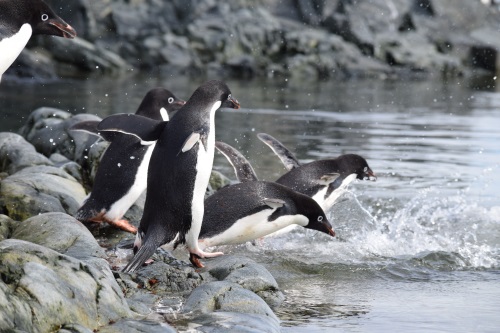By: Erin Pickett
When I was in middle school I wrote a report about bubble rings but I don’t remember if I had the same problem I do now of trying to sound serious, I was probably less concerned about that at the time. That paper was about individual ring-shaped bubbles, like the kind dolphins (or humans like me) blow underwater. This blog is about the bubble nets that humpback whales create to corral their prey underwater (I have yet to master this skill).
I have just finished auditing about 7.5 hours of video footage that we obtained from the suction cup tag we deployed on a Humpback whale earlier this month. My objective was to create a detailed log of underwater foraging behavior. We were especially interested in recording video footage and collecting fine-scale movement data from the whale during coordinated bubble net feeding events. This video footage is the first of its kind documenting this type of feeding behavior in Antarctic Humpback whales.
I found many occurrences of both bubble net and lunge feeding events, and in some cases the underwater visibility was good enough to observe other whales in the video frames. Throughout most of the 7.5 hours the tagged whale was travelling and foraging with at least one other whale, but at one point up to three other individuals were present. Other notable behavior included vocalizations and pectoral fin slapping on the surface of the water. Krill were frequently observed rushing by the forward facing camera just after lunge events.
Watching these videos over the course of a few days I became kind of committed to this whale’s story, and where each video ended and another began I found a narration running through my head that went something like, “next time on the life of the whale… will he find more food?” When the final video ended I even felt a little sad that I wouldn’t be able to keep following him on his journey.
I’ve included some screen shots below to give you a better idea of what I observed while watching the videos.





P.S. I named this whale Mr. Opihi man, since the barnacles and the suction cups stuck to his back reminded me of the way Opihi (the Hawaiian word for limpet) stick to the rocks.

















